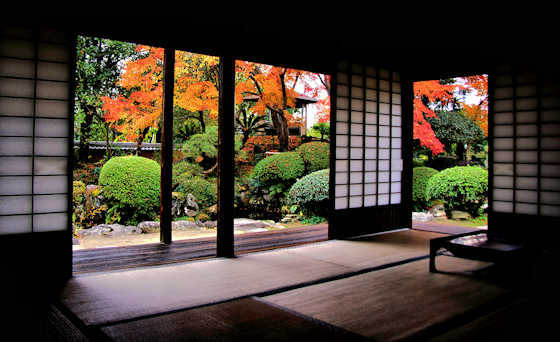Unfortunately, the bridge you see here was severely damaged in the devastating floods that hit this area of Kumamoto earlier in 2020. It leads to Aoi Aso Shrine in Hitoyoshi, but fortunately, the buildings of the shrine were not badly damaged.
As I mentioned in my last post on the Okyu Shrine, there seems to be a lot of thatch in this area, and if you were impressed with the Okyu Shrine gate, then the one here is much bigger. In fact, the 5 main buildings of the shrine are National Treasures, the southernmost in all Japan.

































































